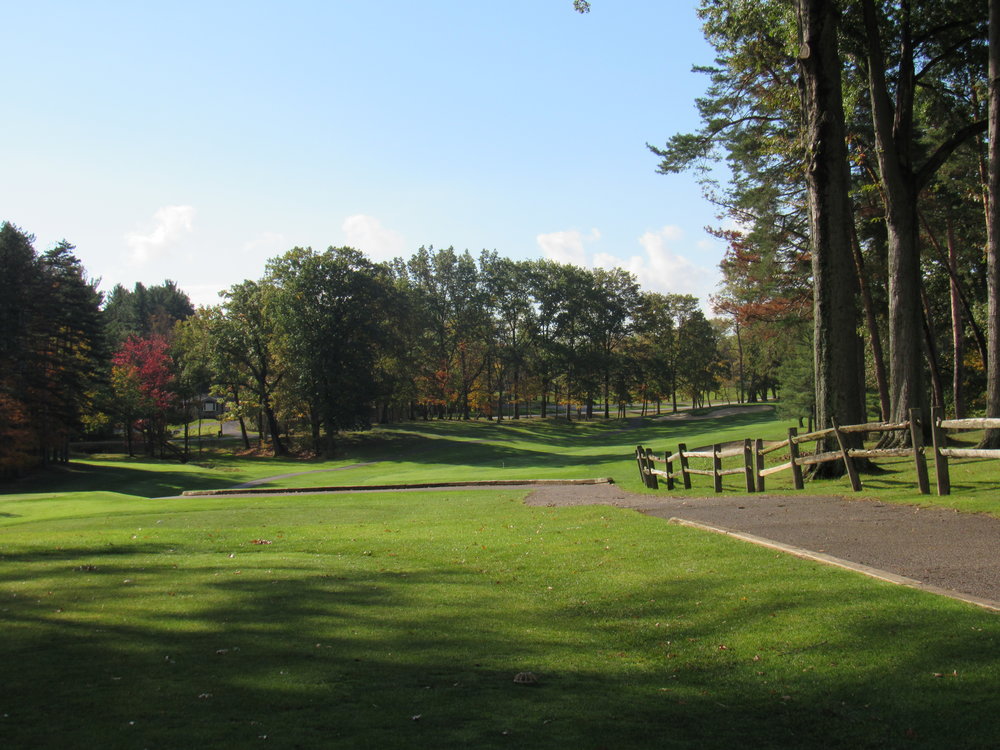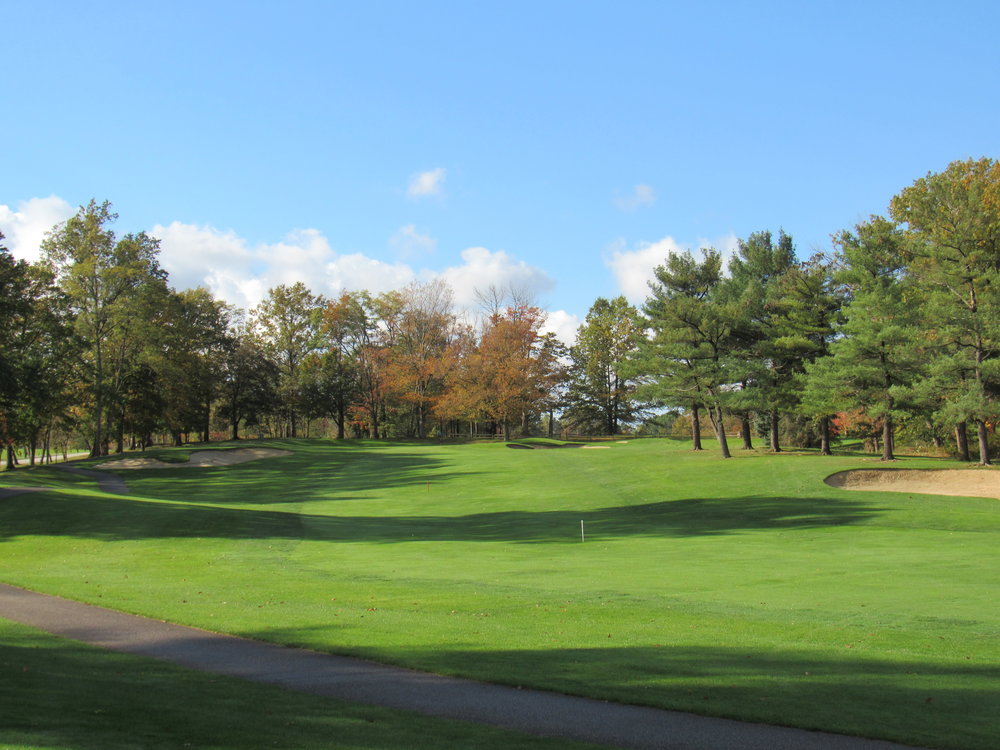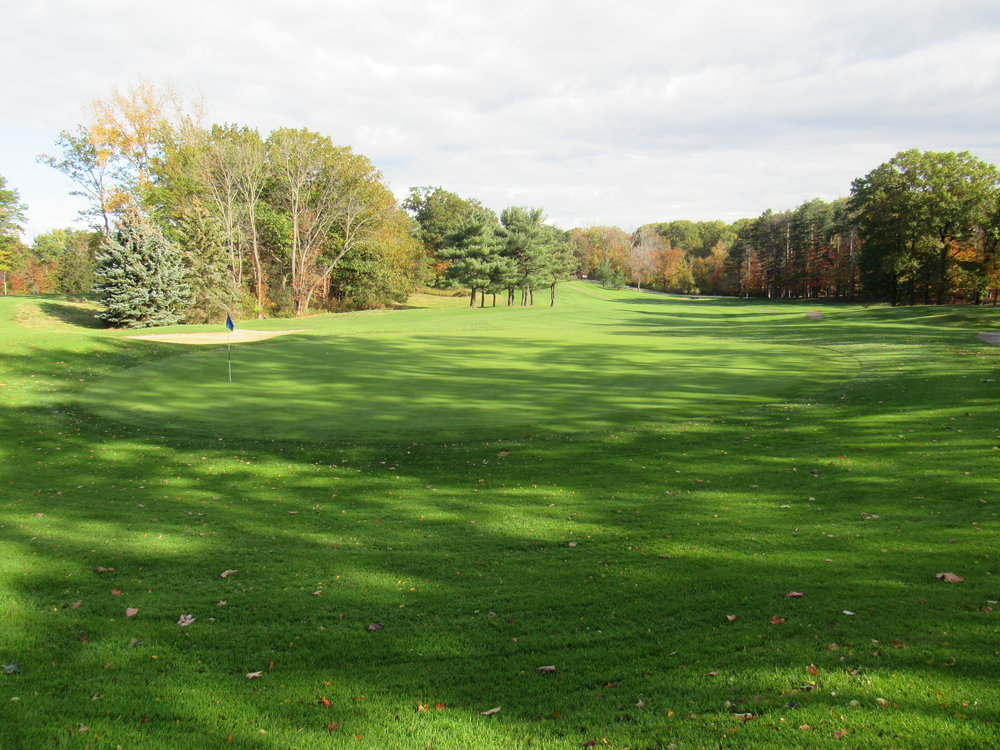This edition of On The Skillet takes us to Cleveland, Ohio. Manakiki Golf Club is an original Donald Ross design run by the Cleveland Parks Department (the Metroparks). Manakiki is a good public course but could be much better with a facelift and proper management.
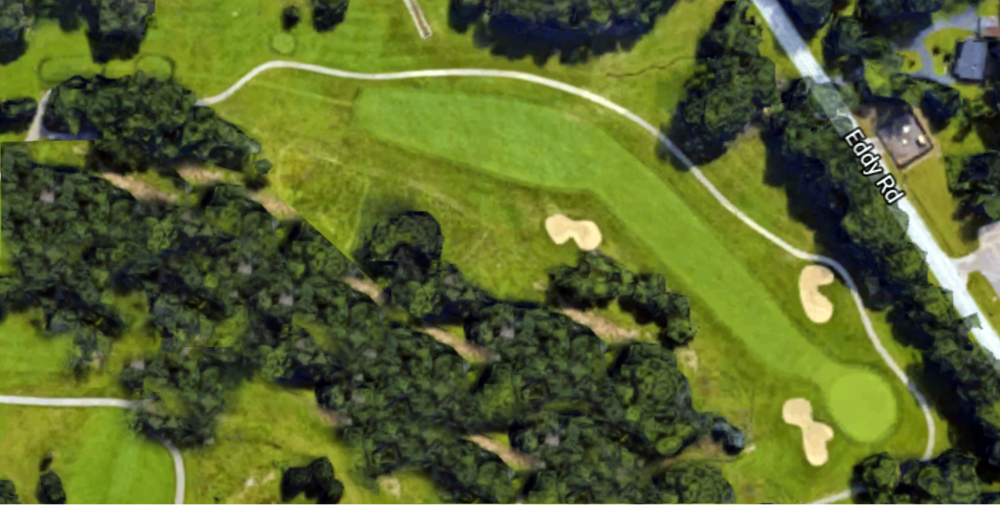
Pictured above is a look at the second hole from Google Earth. This dogleg right is set on a beautiful piece of rolling ground. The hole (like much of the course) has fallen victim to a shrunken fairway and green, and tree planting. Unnecessarily tight fairways have stripped away the strategy of the hole. The only real option is to hit a 240-yard shot to the corner of the dogleg and to follow that with a short-iron/wedge approach to the green. This kind of narrow tee shot is symptomatic of a major problem in golf: For good players, this is very easy and stimulates little to no thought. Meanwhile, for the average or beginners, it’s not easy. The fairway isn’t very wide and if hit, a challenging uphill approach shot still remains.
A proper restoration would improve the hole significantly. It would have endless strategic options for the skilled player and become more challenging, while the average and beginner player would find it much more fun and playable.
An aerial of the hole from 1951 makes it easy to spot the differences from the hole today. The fairway was nearly double in size and pushed up against the right fairway bunker. There weren’t trees blocking a tee shot from going over the bunker, and the green was much larger.
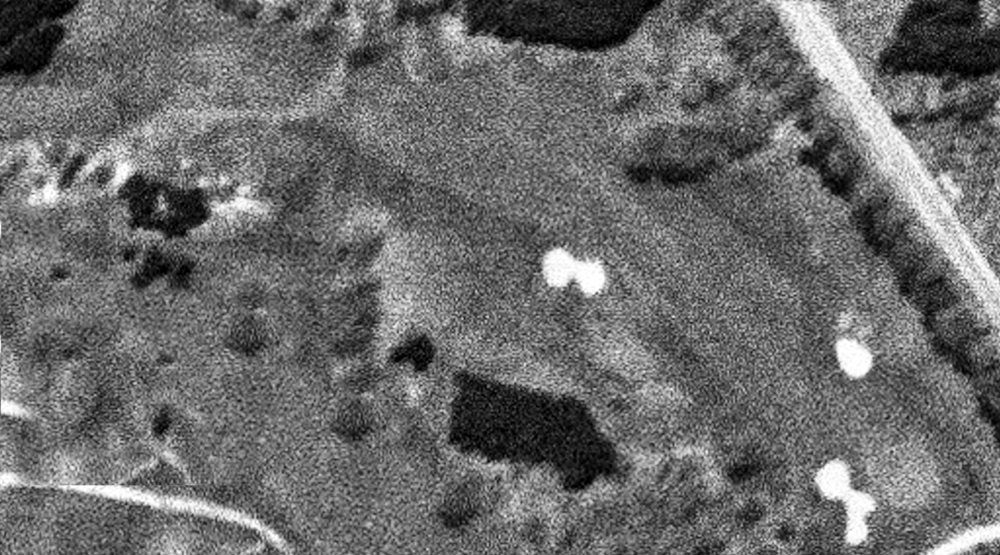
The golf course could get this version back with a few changes. If they took down some of the trees on the right and restored the fairway lines, it might look like this.
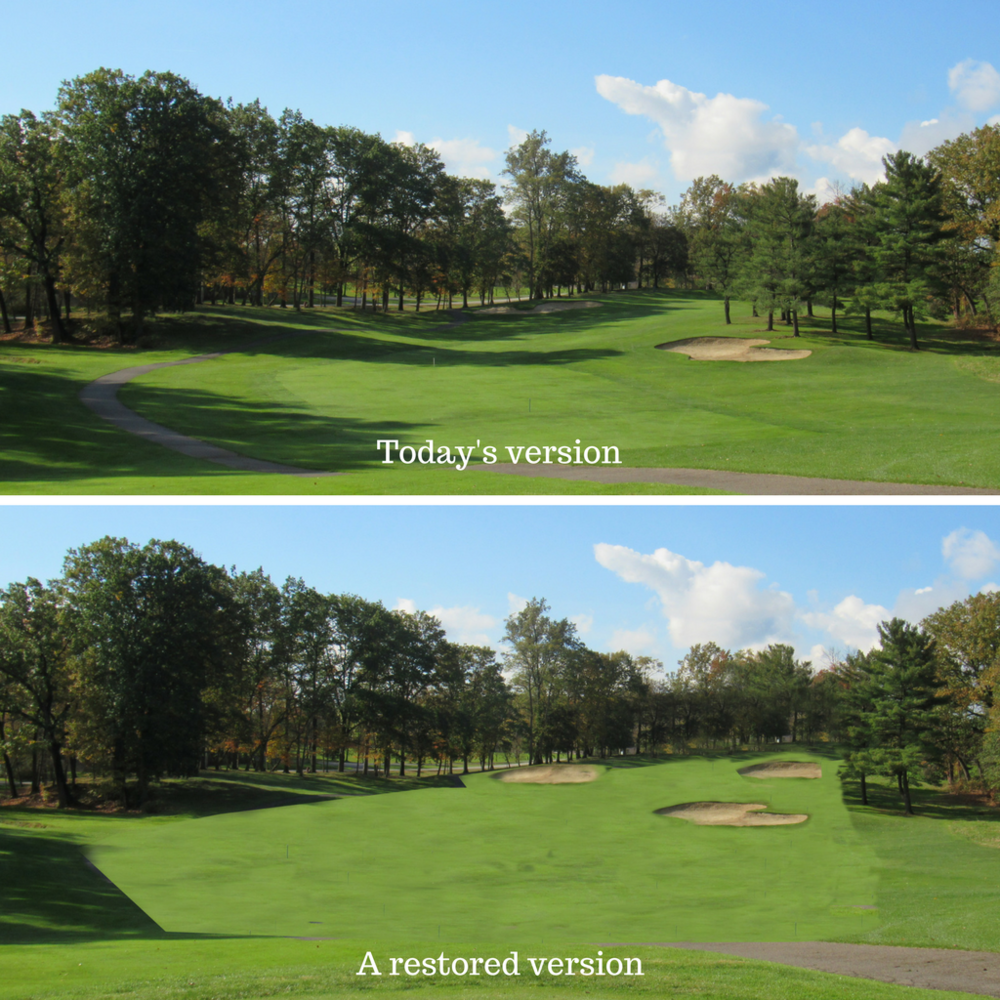
It gives options and the opportunity to play boldly. It opens the door for more birdies but also more mistakes.
A bold play is to take driver and attempt to carry the fairway bunker on the right, which is 240 yards. A successful attempt would yield a flip wedge into the green, but it also brings more risk into play. A tee shot that misses left will find the rough, trees or possibly out of bounds. A push to the right could leave a player blocked out or attempting to hit to a short-sided pin from the rough. To hit a good shot, a player must pick the right line and hit the driver the correct distance. By opening up the hole and allowing good players the opportunity to hit driver, it brings a possibility of a big number as well.
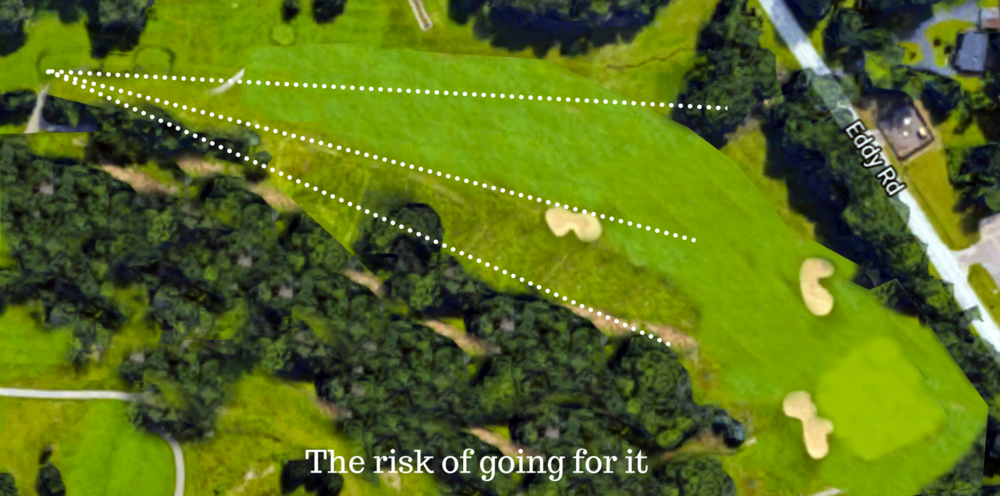
The safe play is still the same. Hitting a 240-yard shot to the corner of the dogleg will yield a 150ish shot into the green. The wide fairway makes it much more enjoyable for the mid to high handicapper but entices the good player. Depending on the day’s pin position, a player might try to set up an angle to approach the pin. A left pin would force the layup play towards the edge of the right bunker, bringing it squarely into play. A right pin would push play to the left side of the fairway and bring the trees and mounding into play.
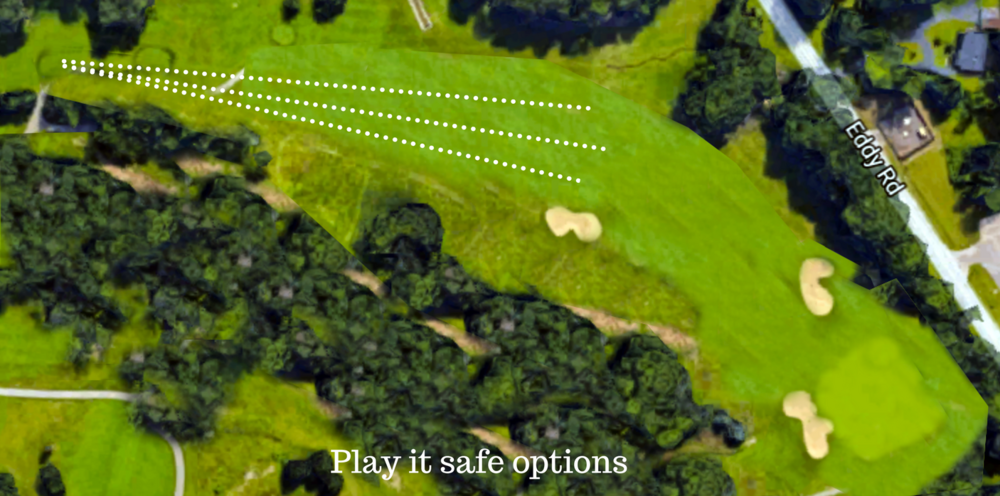
The wider fairway forces better players to select their line and execute a shot. The current narrow fairway tells players what shot to hit. Simple tree removal and fairway expansion transform a thoughtless hole into one filled with options, and we haven’t even talked about the needed green expansion…
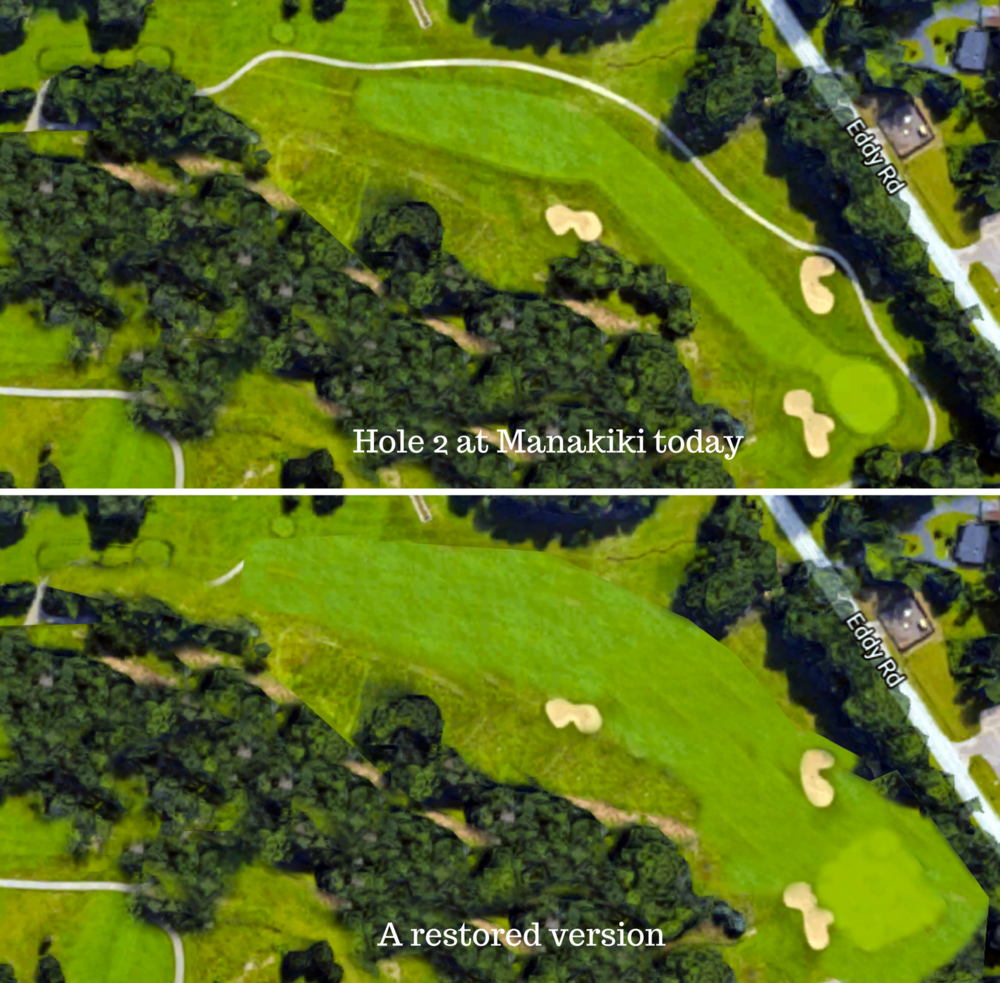


 by
by 